Bhakti Yoga meaning: devotion & spirituality explained

What is Bhakti Yoga?
Honestly, the first time I heard the words “Bhakti Yoga,” my brain conjured up images of complicated poses or chanting in a dimly lit room filled with incense smoke. Maybe you’ve thought the same, or perhaps you’re wondering right now: “Bhakti what?” Don’t worry—it’s not as cryptic as it sounds.
Simply put, Bhakti Yoga is all about devotion. It’s a spiritual path within Hinduism that’s built entirely on love and devotion towards a personal serving god or deity. I mean, imagine pouring all your heart, all your energy, into loving something bigger than yourself. Pretty powerful, right?
Bhakti Yoga isn’t some new-age trend either; it’s one of the three classical paths in Hinduism, sitting alongside other traditions jnana yoga (the path of knowledge) and karma yoga (the path of action). The ultimate goal? Achieving moksha—freedom from the cycle of birth and death. Heavy stuff, but stick with me.
Interestingly, Bhakti Yoga is actually mentioned way back in the Shvetashvatara Upanishad, which, by the way, is a pretty ancient Hindu scripture. It describes Bhakti as participation, devotion, and love towards any endeavor or higher power. The Bhagavad Gita—arguably Hinduism’s most famous spiritual guide—also dives deep into Bhakti Yoga as a pathway to spiritual liberation and freedom.
When I first explored Bhakti, to be honest, I expected a neat definition and some guidelines on devotion, but nope—it turns out Bhakti is way more personal, messy, and heartfelt. Like any real relationship, it’s imperfect. And that’s exactly why it’s beautiful.
Origin and history of the Bhakti movement
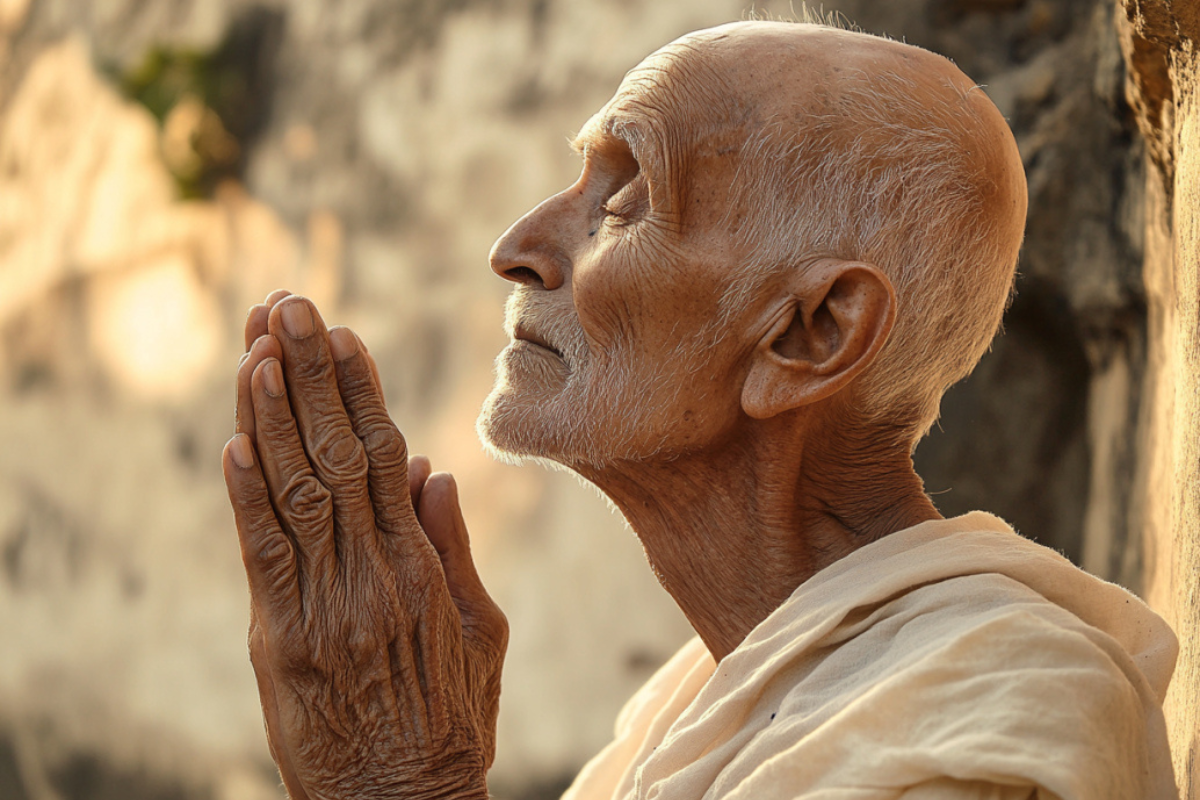
At first glance, history might seem dry (let’s be real, history class was never my thing), but the Bhakti movement isn’t your average chapter in a textbook. It’s actually pretty fascinating—think spiritual revolution meets poetic rebellion. Seriously.
The Bhakti movement kicked off around the 6th century CE in South India, and here’s the cool part: it was a direct response to the rigid caste system and overly complex, ritual rich tradition-driven forms of worship at the time. Basically, people got tired of the whole “only priests can connect to the divine” thing and decided, “Hey, we want in, too!”
So, this spiritual uprising wasn’t led by kings or philosophers but by poets, saints, and even everyday folks who just genuinely loved God. They sang, danced, wrote poetry, and created this vibrant, inclusive spiritual wave that swept across India. I mean, imagine poetry and music as tools of rebellion—pretty wild, right?
One of my favorite surprises while digging into this history was learning just how inclusive it all was. Bhakti cut through caste, gender, and social barriers like nothing else before. Saints and mystics came from all walks of life—like Mirabai, a rebellious princess turned poet who wrote beautiful love songs to Lord Krishna, completely disregarding royal protocol (much to her family’s horror). Talk about devotion with an edge.
There were also saints like Kabir and Tulsidas who transformed spirituality into something accessible and relatable, using everyday language instead of complicated Sanskrit. They basically said, “Hey, you don’t need fancy rituals—just love God, and you’re good.”
Honestly, the Bhakti movement feels less like history and more like inspiration for today’s world. I found myself thinking, if they could break down barriers with poetry and love centuries ago, what’s stopping us today?
The nine forms of Bhakti
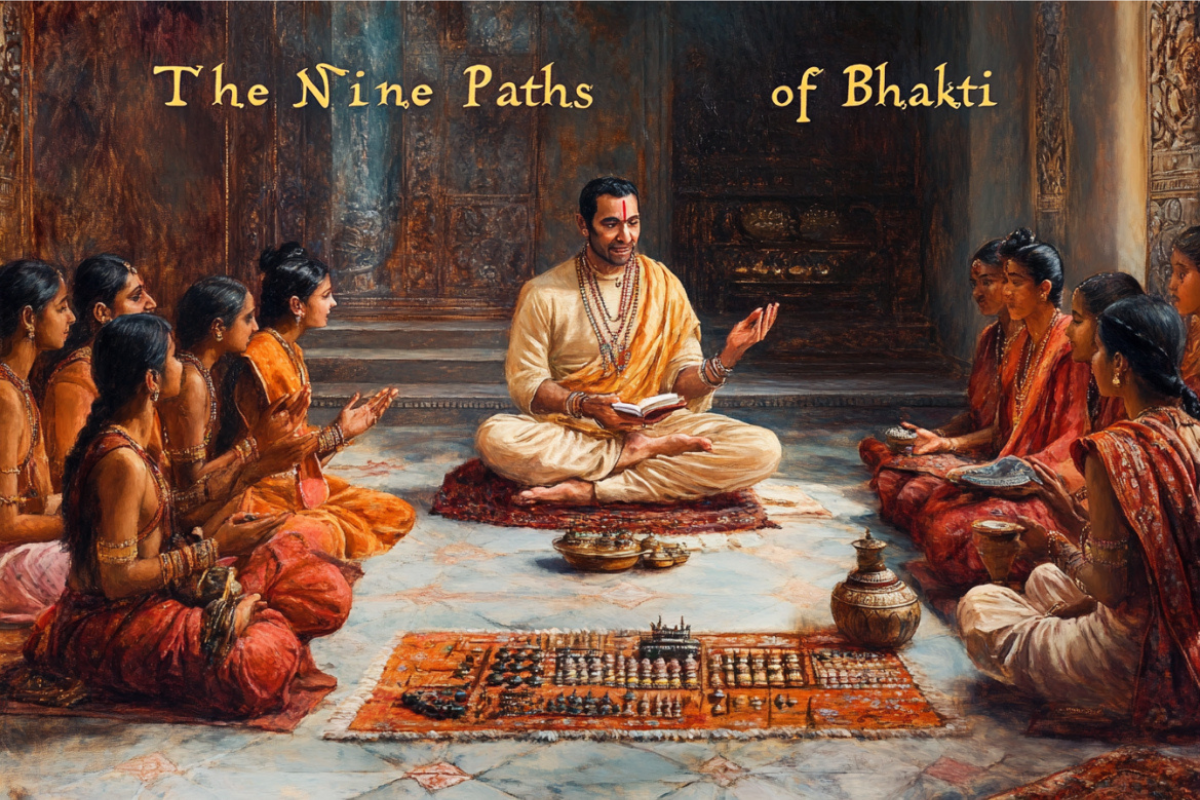
Okay, confession time—I didn’t even know there was more than one way to practice Bhakti Yoga when I first started diving into it. Imagine my surprise when I learned there’s not just one, but nine different ways. Nine! At first, I was like, “Seriously? Isn’t one way enough?” But as I got into it, I realized each other form of devotion was like a different flavor of devotion—something for everyone.
So, what are these nine forms exactly? Glad you asked (even if you didn’t, just humor me here):
- Shravana (Listening to stories of the divine)
- Kirtana (Chanting or singing praises)
- Smarana (Remembering or meditating on the divine grace)
- Padaseva (Serving at the feet of God, serving god, or serving humanity)
- Archana (Worshipping through rituals)
- Vandana (Offering respectful prayers)
- Dasya (Seeing oneself as a servant of God)
- Sakhya (Seeing God as a friend)
- Atmanivedana (Complete surrender)
To be honest, when I first read this list, I felt a bit overwhelmed. I mean, “complete surrender”? “Serving at the feet”? It sounded intense. But then something clicked. Each form is just a way to personalize devotion—to make it yours.
One day, I tried Shravana by listening to stories about Lord Krishna’s playful antics. I don’t even know how to describe it, but halfway through, I realized I was smiling like an idiot. It was joyful and comforting in a way I didn’t expect. Another day, Kirtana caught my attention. I’m not exactly a Grammy-worthy singer (trust me, ask my neighbors), but chanting along with the music felt surprisingly uplifting.
Each practice helps you deepen your connection with the divine in your own path in a unique way, and what’s cool is you don’t have to stick with just one. I found myself jumping between forms based on how I felt that day, and honestly, it made my practice feel so much richer—and way more human.
Because at the end of the day, Bhakti isn’t about perfection. It’s about sincerity and soul and heart. It’s okay if one day you’re singing joyfully, and the next you’re just quietly listening. Devotion is flexible—just like our moods (thank goodness!).
Practicing Bhakti Yoga for well-being

When I first heard people talking about yoga for well-being, I pictured twisting myself into pretzel-like poses, balancing precariously, and desperately trying not to fall flat on my face. But Bhakti Yoga is a whole different story—it’s less about the body and more about the heart.
Practicing Bhakti is essentially developing a loving, devotional relationship with a deity or a higher power—whether it’s Krishna, Shiva, Ganesha, or whoever resonates with you. For me, it started out pretty simple: lighting a candle, chanting a mantra quietly (bad pronunciation and all), and just letting myself feel something beyond the daily grind.
One morning, I vividly remember sitting cross-legged (which sounds peaceful but actually my foot fell asleep pretty fast), chanting the mantra “Om Namah Shivaya,” and suddenly realizing tears were streaming down my face. At one point, I caught myself thinking, “What is going on right now?” It felt unexpected, raw, and honestly a little embarrassing. But later, it dawned on me—that’s Bhakti in action. It touches places inside us that we often ignore.
Rituals and devotional practices in Bhakti Yoga—whether it’s singing devotional songs, chanting mantras, or even quietly reflecting—serve to soften and open the heart. The ultimate goal is reaching a state called rasa, a feeling of pure, blissful connection with the individual self and the divine. I definitely haven’t reached total rasa yet (I mean, is anyone ever totally blissed-out?), but I’ve definitely tasted tiny moments of it.
Honestly, practicing Bhakti Yoga brought a surprising benefit: it eased anxiety and stress in ways that meditation alone couldn’t quite do for me. There’s something powerful about offering your worries and fears up to something bigger. It doesn’t make problems vanish, but somehow, I ended up feeling lighter. Less alone.
It turns out devotion—true heartfelt loving devotion—is a pretty solid antidote to life’s chaos. And trust me, life can get pretty chaotic.
Applying Bhakti Yoga in daily life
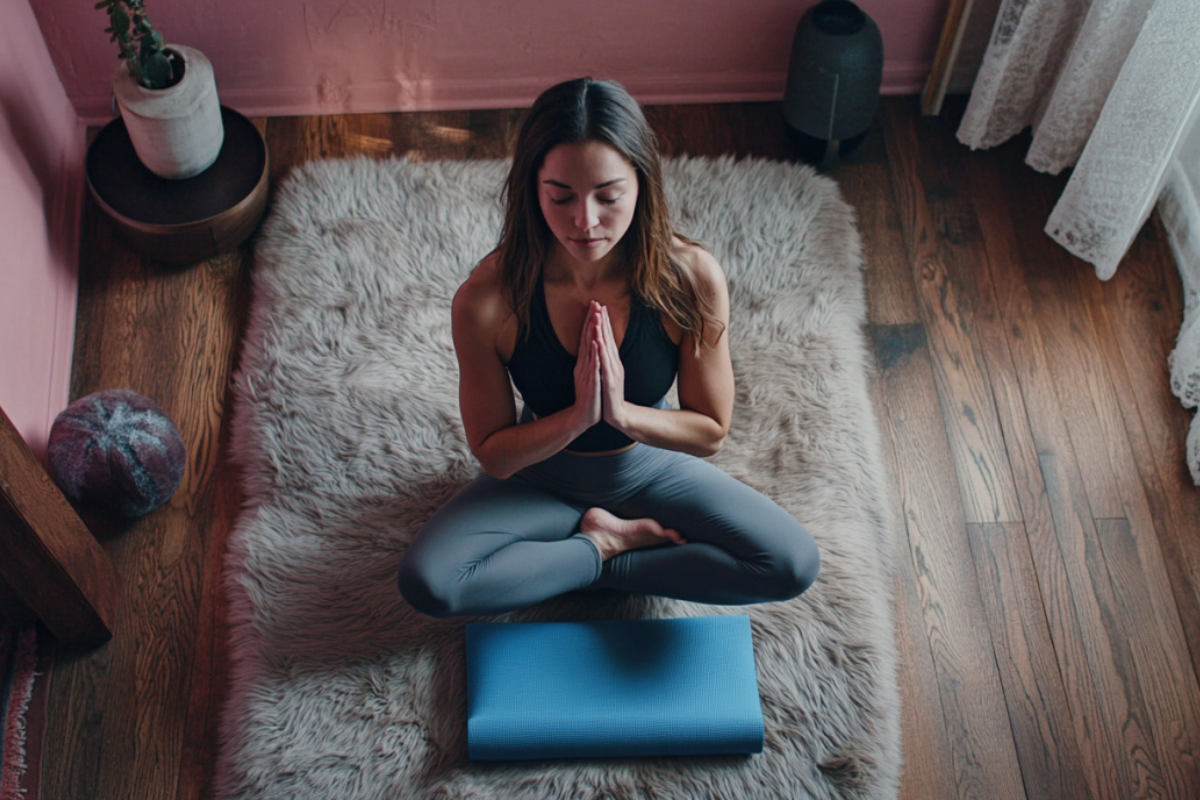
Okay, so here’s the thing about Bhakti Yoga—it’s actually way easier to integrate into everyday life than you’d think. I mean, at first, I was skeptical. My daily routine didn’t exactly scream “spiritual”—unless rushing through coffee and dodging traffic counts as enlightenment (hint: it doesn’t).
But Bhakti isn’t about huge, life-upending changes. It’s actually about adding tiny, intentional acts of devotion throughout the day. I started with something simple: dedicating my morning tea ritual to the divine. I’d whisper a quiet “thank you” as the tea brewed, feeling silly at first, but oddly comforted.
Chanting was another easy win. Now, let’s be real, chanting can seem intimidating. I was afraid my voice would annoy neighbors or scare off local wildlife. But I tried humming a simple mantra softly while doing dishes, and I swear, the monotony of scrubbing pots somehow turned into a peaceful meditation. Who knew dishwashing could become sacred?
One of my favorite Bhakti practices quickly became singing devotional songs—badly, mind you—while stuck in traffic. Picture this: me, windows rolled up tight, loudly belting out chants while people in the next car probably thought I’d lost my mind. I probably looked ridiculous, but weirdly enough, road rage disappeared. Seriously, devotional singing might be the best traffic hack ever.
Even mundane tasks, like cleaning or cooking, can become acts of devotion. The trick is simple: just dedicate the action to a higher power. “This meal is prepared with love,” I’d silently say, chopping vegetables with (slightly exaggerated) care. At one point, I caught myself thinking, “Wait, am I really doing this?” But the funny thing is, I genuinely started feeling more mindful, grateful, and calm—even in the chaos of everyday chores.
The beauty of applying Bhakti Yoga daily is that it’s flexible, forgiving, and, most importantly, human. Some days, honestly, I forget entirely. Life happens. And that’s totally fine. The next day, I start fresh, and devotion patiently waits. Bhakti doesn’t judge, and that’s kind of the point.
Benefits of a Bhakti Yoga practice

Alright, so we’ve talked about what Bhakti Yoga is, how to practice it, and how to slip it into everyday life—but now comes the big question: does it actually make a difference? Spoiler alert: yes. And I’m not just saying this because I’m writing an article about it; I genuinely felt some pretty major shifts.
The most immediate benefit I noticed was a huge reduction in anxiety. Before Bhakti entered my life, stress was practically my default mode—deadlines, obligations, and endless notifications had me spinning in circles. But as soon as I started chanting, singing, and dedicating everyday tasks to something bigger, I felt calmer. Like, weirdly calmer. I don’t even know how to describe it, but it felt like someone turned down the volume on the noise inside my head.
Emotionally, Bhakti became a kind of gentle therapy session. The first time I cried during chanting, I was mortified (seriously, who cries while chanting?), but later realized it was just pent-up feelings finally finding a release. Bhakti Yoga created a safe space for those emotions—no judgment, just acceptance.
Physically, while Bhakti isn’t necessarily about toning your abs, it definitely helped me release tension. Turns out stress and anxiety have a sneaky way of settling into your shoulders and jaw (at least mine do). Singing and chanting loosened those knots surprisingly well—better than my overpriced massages, to be honest.
Another unexpected perk? Empathy. Bhakti Yoga nudged me to see beyond myself and tap into compassion. Devotion, I realized, isn’t just vertical—connecting to something above—but also horizontal, extending kindness to people around us. And let me tell you, this didn’t make me Mother Teresa overnight (far from it), but it did soften my edges just enough to notice a change.
And spiritually—this one’s pretty obvious—Bhakti Yoga deepened my sense of connection with something greater. Even on tough days, when my practice was shaky or practically nonexistent, I felt anchored by the idea of selfless devotion. Like knowing there’s always something bigger holding you, even if you momentarily let go.
Did Bhakti Yoga suddenly make my life perfect? Definitely not. But it gave me tools—real, practical tools—to handle imperfection with more grace, resilience, and love.
Cultivating devotion through Kirtan and music
If you had told me a few years ago I’d be spending Friday nights chanting ancient Sanskrit mantras with a group of strangers, I’d have laughed—probably nervously—and quickly changed the subject. But somehow, I ended up at a Kirtan gathering, feeling both wildly out-of-place and oddly curious.
For those unfamiliar (like me initially), Kirtan is essentially devotional music where chants and mantras are sung in a call-and-response style. Imagine karaoke—but spiritual and way less intimidating. At first, I’ll admit, it felt awkward. I mean, sitting cross-legged, chanting names I couldn’t pronounce, and clapping along hesitantly? Not exactly my comfort zone.
But something shifted about 20 minutes in. The repetitive chanting created this wave-like rhythm, washing away my self-consciousness. Suddenly, it didn’t matter that I mispronounced half the words or that my voice cracked embarrassingly on high notes. Everyone around me was singing their hearts out, mistakes and all. To be honest, I was NOT prepared for how powerful and emotional it would feel.
Kirtan, as I soon discovered, isn’t about performing. It’s about connection—to the divine, to the people around you, and even to your messy, imperfect self. The chants seemed to vibrate in my chest, calming my racing thoughts and pulling me deeply into the present moment.
The funny thing is, after a few sessions, I found myself humming these mantras at random times—like waiting in line at the grocery store or getting stuck in traffic again (clearly a recurring theme in my life). One day, I realized I was softly singing “Hare Krishna” while folding laundry and thought, “Okay, I’ve officially gone off the deep end.” But honestly, it made mundane tasks feel kind of beautiful.
Now, Kirtan and music have become some of my favorite ways to practice Bhakti Yoga. It’s joyful, messy, heartfelt, and incredibly freeing. And trust me, you don’t have to be musical—I mean, if I can do it, literally anyone can. It’s less about hitting the right notes and more about opening your heart to something greater. Plus, it’s honestly fun. Who knew spirituality could be this uplifting?
Creating a sacred space for Bhakti Yoga
Let’s talk sacred spaces. Before diving into Bhakti Yoga, my idea of a sacred space was basically limited to Pinterest boards full of beautiful altars I could never replicate. My actual attempts? Well, let’s just say they weren’t exactly Insta-worthy. (Picture: a sad, lopsided candle next to a wilting plant.) But Bhakti Yoga taught me something crucial: sacredness isn’t about aesthetics—it’s about intention.
Creating a space dedicated to devotion turned out to be surprisingly meaningful. My first attempt involved clearing a tiny corner of my cluttered bedroom—mostly pushing piles of laundry out of the way—and placing a simple photo of Lord Krishna, a candle, and a small bowl of water. It was humble, slightly crooked, and honestly, kind of adorable in its imperfection.
But here’s the funny part: the moment I lit the candle and sat down in front of that modest altar, I felt something shift inside me. Somehow, this little corner of my chaotic home had become a sanctuary, instantly peaceful and comforting.
Gradually, my altar evolved. I added personal items—a feather I found during a morning walk, a bracelet gifted by a friend, even a funny-looking rock picked up on vacation. Each item held meaning, memories, or emotions. The altar wasn’t just decorative—it was a living expression of my journey and devotion.
Of course, creating a sacred space doesn’t mean you need an elaborate setup or expensive decor. You can make one anywhere—in your garden, by a sunny window, or even just a tiny shelf in your kitchen. My friend once confessed she made a portable sacred space in her car (yes, her car)—a small figurine on her dashboard accompanied by gentle chanting during her commute. Genius.
The beauty of Bhakti Yoga’s sacred spaces is their flexibility and simplicity. They can be grand or humble, neat or messy. It’s all about cultivating intention and connection, not perfection.
And believe me, if I—queen of disorganized rooms and forgotten laundry—can create and maintain a sacred space, so can you. It’s honestly simpler and more rewarding than you think.
Conclusion
Alright, here’s the thing: Bhakti Yoga isn’t about being perfect, spiritually enlightened, or having everything figured out. (If it was, trust me, I’d be the first one out.) It’s actually about embracing exactly the opposite—imperfection, openness, and heartfelt devotion. It’s realizing that true fulfillment comes from connecting with something bigger, something beyond material world, your to-do list, worries, and daily grind.
Practicing Bhakti Yoga taught me the incredible power of an open heart. Honestly, before this journey, I had no idea just how transformative genuine devotion could be. Sure, my downward dog still looks questionable, and I definitely can’t hold a chant perfectly for more than a minute, but none of that matters in Bhakti. What matters is sincerity, a deep connection to, and a willingness to show up, again and again, messy and all.
Bhakti Yoga’s true gift is that it meets you exactly where you are—no judgment, no pretense, just pure, unconditional love. It helps us navigate life’s ups and downs (and let’s be real, there are plenty) with grace, resilience, and compassion.
So, would I recommend Bhakti Yoga? Absolutely, without hesitation. But fair warning: it might crack your heart wide open, soften your edges, and make mundane moments feel suddenly sacred. And you know what? Life is infinitely better for it.
If you’re feeling curious, inspired, or even skeptical, my advice is simple: give it a try. Light a candle, chant a mantra, hum a little Kirtan song during your morning coffee. You never know—Bhakti might just surprise you in the best possible way.
And one last thing: don’t stress about doing it “right.” Remember, devotion isn’t perfect—it’s human, beautifully imperfect, and endlessly forgiving. Just like us.
Now, I gotta ask: if Bhakti Yoga can transform a skeptic like me, what might it do for you?
FAQs
Not at all. Bhakti Yoga is open to everyone, regardless of religious beliefs. It’s simply about developing a loving and personal connection with something greater than yourself—whatever or whoever that might be for you.
Absolutely! While chanting and singing (Kirtan) are common practices, Bhakti Yoga can also involve quiet reflection, prayer, journaling, or acts of kindness. It’s all about devotion in a way that resonates with you.
Nope! Unlike many yoga styles, Bhakti Yoga is not focused on physical poses. Instead, it’s about cultivating heartfelt devotion through practices like chanting, prayer, or meditation, making it accessible to anyone, regardless of physical ability.
There’s no strict requirement—Bhakti Yoga is incredibly flexible. Even five minutes of intentional practice, like chanting, meditation, or simply expressing gratitude, can significantly impact your emotional and spiritual well-being.
Keep it simple. Try dedicating a few moments each day to something you feel drawn to—chanting a mantra, creating a small sacred space at home, or listening to devotional music. Start small, be patient, and let your practice naturally grow from there.
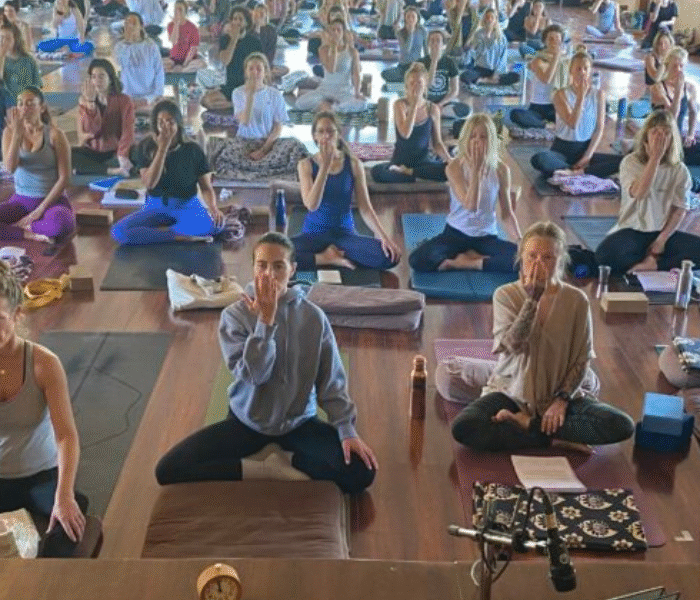

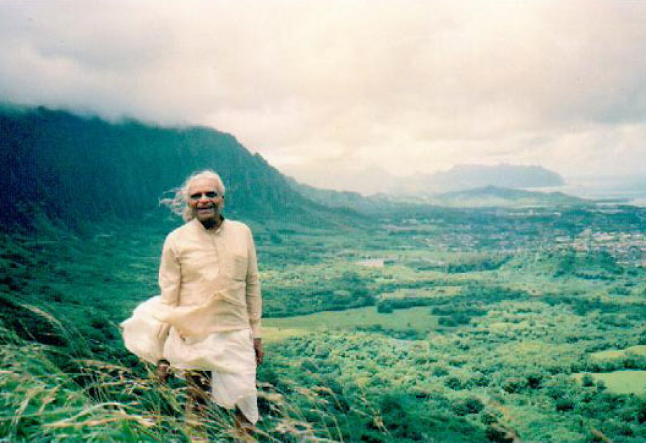


bhakti yoga is pure love. been chanting and meditating and its like a spiritual awakening. highly recommend if you’re into deep connection
bhakti yoga isnt about physical stuff, its about emotional connection. been practicing and its like my heart opened up. love it